High-Temperature Oxidation Behaviors of TA15 Titanium Alloy after Mechanical Grinding and Laser Cleaning
Abstract
:1. Introduction
2. Materials and Methods
3. Results
3.1. Surface Morphology Analyses
3.2. Section Analyses
3.3. XPS Analyses
3.4. XRD Analyses
3.5. Roughness Analysis
4. Conclusions
- (1)
- Mechanical grinding and laser cleaning can remove titanium alloy oxide film. A small amount of scratches appear on the surface after mechanical grinding. However, the surface is relatively smooth after laser cleaning.
- (2)
- TA15 titanium alloy is easy oxidized in air at high temperature, and the thickness of oxide film is increased when the high-temperature time increases. Surface roughness increases first and then decreases with time, but hardness increases continuously. Compared with mechanical grinding, TA15 titanium alloy after laser cleaning has high-temperature oxidation resistance.
- (3)
- The main components of high-temperature oxide film of TA15 titanium alloy after mechanical grinding and laser cleaning are TiO2, Ti2O3 and TiO, and also contain a small amount of alloy element oxides such as Al2O3. Alumina is mainly concentrated on the surface of the oxide film, which may play an important role in the high-temperature oxidation resistance of titanium alloy.
- (4)
- Compared with mechanical grinding, laser cleaning technology can provide excellent subsequent processing characteristics, which has great significance for the development of laser cleaning technology.
Author Contributions
Funding
Institutional Review Board Statement
Informed Consent Statement
Data Availability Statement
Conflicts of Interest
References
- Dimitriu, S.; Dobrescu, M.; Vasilescu, M. Titanium and titanium-based alloys for aerospace. Metal. Int. 2009, 14, 14–18. [Google Scholar]
- Fokin, V.N.; Fokina, E.E.; Tarasov, B.P. Chemical interaction of the Ti94Al6 and Ti91Al9 alloys with ammonia between 150 and 500 °C. Inorg. Mater. 2010, 46, 1304–1307. [Google Scholar] [CrossRef]
- Koizumi, H.; Takeuchi, Y.; Imai, H.; Kawai, T.; Yoneyama, T. Application of titanium and titanium alloys to fixed dental prostheses. J. Prosthodont. Res. 2019, 63, 266–270. [Google Scholar] [CrossRef]
- Liu, W.; Ao, S.; Li, Y.; Liu, Z.; Wang, Z.; Luo, Z.; Wang, Z.; Song, R. Jet electrochemical machining of TB6 titanium alloy. Int. J. Adv. Manuf. Technol. 2017, 90, 2397–2409. [Google Scholar] [CrossRef]
- Li, P.; Li, S.; Li, Y.P.; Li, G.P.; Liu, J.; Wang, J.; Han, P. Effect of titanium addition on the oxidation resistance of Fe–13Cr-5Al-0.3Ti alloy in air between 700 °C–1100 °C. Mater. Res. Express. 2018, 8, 1–20. [Google Scholar]
- Małecka, J. Investigation of the oxidation behavior of orthorhombic Ti2AlNb Alloy. J. Mater. Eng. Perform. 2015, 24, 1834–1840. [Google Scholar] [CrossRef] [Green Version]
- Mythili, R.; Saroja, S.; Vijayalakshmi, M. Characterization of passive oxide film on a Ti–5%Ta–1.8%Nb alloy on exposure to severe oxidizing conditions. Mater Charact. 2010, 61, 1326–1334. [Google Scholar] [CrossRef]
- Ma, K.; Zhang, R.; Sun, J.; Liu, C. Oxidation mechanism of biomedical titanium alloy surface and experiment. Int. J. Corros. 2020, 2020, 1–9. [Google Scholar] [CrossRef]
- Jouanny, I.; Labdi, S.; Aubert, P.; Buscema, C.; Maciejak, O.; Berger, M.H.; Guipont, V.; Jeandin, M. Structural and me-chanical properties of titanium oxide thin films for biomedical application. Thin Solid Films 2010, 518, 3212–3217. [Google Scholar] [CrossRef]
- Tanaka, Y.; Nakai, M.; Akahori, T.; Niinomi, M.; Tsutsumi, Y.; Doi, H.; Hanawa, T. Characterization of air-formed surface oxide film on Ti–29Nb–13Ta–4.6Zr alloy surface using XPS and AES. Corros. Sci. 2008, 50, 2111–2116. [Google Scholar] [CrossRef]
- Vončina, M.; Tisu, R.; Medved, J. Oxidation stability of various Ti-alloys. J. Therm. Anal. Calorim. 2017, 129, 117–122. [Google Scholar] [CrossRef]
- Park, S.Y.; Seo, D.Y.; Kim, S.W.; Kim, S.E.; Hong, J.K.; Jung, S.B.; Bak, S.H.; Lee, D.B. High-temperature oxidation of Ti–44Al–6Nb–2Cr–0.3Si–0.1C Alloy. Sci. Adv. Mater. 2016, 8, 2264–2268. [Google Scholar] [CrossRef]
- Wang, D.; Li, H.; Zheng, W. Oxidation behaviors of TA15 titanium alloy and TiBw reinforced TA15 matrix composites prepared by spark plasma sintering. J. Mater. Sci. Technol. 2019, 37, 46–54. [Google Scholar] [CrossRef]
- Kumar, A.; Sapp, M.; Vincelli, J.; Gupta, M.C. A study on laser cleaning and pulsed gas tungsten arc welding of Ti–3Al–2.5V alloy tubes. J. Mater. Process. Tech. 2010, 210, 64–71. [Google Scholar] [CrossRef]
- Lu, Y.; Ding, Y.; Wang, G.; Yang, L.; Wang, M.; Wang, Y.; Guo, B. Ultraviolet laser cleaning and surface characterization of AH36 steel for rust removal. J. Laser Appl. 2020, 32, 032023. [Google Scholar] [CrossRef]
- Tian, Z.; Lei, Z.; Chen, X.; Chen, Y.; Zhang, L.-C.; Bi, J.; Liang, J. Nanosecond pulsed fiber laser cleaning of natural marine micro-biofoulings from the surface of aluminum alloy. J. Clean. Prod. 2020, 244, 118724. [Google Scholar] [CrossRef]
- Tian, Z.; Lei, Z.; Chen, Y.; Chen, C.; Zhang, R.; Chen, X.; Bi, J.; Sun, H. Inhibition effectiveness of laser-cleaned nanostructured aluminum alloys to sulfate-reducing bacteria based on superwetting and ultraslippery surfaces. ACS Appl. Bio Mater. 2020, 3, 6131–6144. [Google Scholar] [CrossRef]
- Shi, T.; Wang, C.; Mi, G.; Yan, F. A study of microstructure and mechanical properties of aluminum alloy using laser cleaning. J. Manuf. Process. 2019, 42, 60–66. [Google Scholar] [CrossRef]
- Gao, Q.; Li, Y.; Wang, H.-E.; Liu, W.; Shen, H.; Zhan, X. Effect of scanning speed with UV laser cleaning on adhesive bonding tensile properties of CFRP. Appl. Compos. Mater. 2019, 26, 1087–1099. [Google Scholar] [CrossRef]
- Zheng, B.; Jiang, G.; Wang, W.; Mei, X. Fabrication of superhydrophilic or superhydrophobic self-cleaning metal surfaces using picosecond laser pulses and chemical fluorination. Radiat. Eff. Defects Solids 2016, 171, 461–473. [Google Scholar] [CrossRef]
- Zhuang, S.; Kainuma, S.; Yang, M.; Haraguchi, M.; Asano, T. Characterizing corrosion properties of carbon steel affected by high-power laser cleaning. Constr. Build. Mater. 2020, 274, 122085. [Google Scholar] [CrossRef]
- Liu, B.; Mi, G.; Wang, C. Research on grain refinement and wear behavior of micro-remelted Ta15 alloy surface by laser cleaning. Mater. Chem. Phys. 2020, 259, 124022. [Google Scholar] [CrossRef]
- Gong, Y.X.; Xu, J.; Buchanan, R.C. Surface roughness: A review of its measurement at micro-/nano-scale. Phys. Sci. Rev. 2018, 3, 1–10. [Google Scholar] [CrossRef]
- Mieno, H.; Katsui, T. Experimental investigation of added frictional resistance by paint rough surface using a rotating cylinder. J. Mar. Sci. Tech. 2021, 26, 1–15. [Google Scholar] [CrossRef]
- Wong, M.H.; Cheng, F.; Pang, G.; Man, H. Characterization of oxide film formed on NiTi by laser oxidation. Mater. Sci. Eng. A 2007, 448, 97–103. [Google Scholar] [CrossRef]
- Liu, J.; Wu, G.; Li, S.; Yu, M.; Yi, J.; Wu, L. Surface analysis of chemical stripping titanium alloy oxide films. J. Wuhan Univ. Technol. Sci. Ed. 2012, 27, 399–404. [Google Scholar] [CrossRef]
- Zhang, L.; Li, Y.; Guo, H.; Zhang, H.; Zhang, N.; Hayat, T.; Sun, Y. Decontamination of U(VI) on graphene oxide/Al2O3 composites investigated by XRD, FT-IR and XPS techniques. Environ. Pollut. 2019, 248, 332–338. [Google Scholar] [CrossRef]
- McCafferty, E.; Wightman, J. An X-ray photoelectron spectroscopy sputter profile study of the native air-formed oxide film on titanium. Appl. Surf. Sci. 1999, 143, 92–100. [Google Scholar] [CrossRef]
- Vasylyev, M.; Chenakin, S.; Yatsenko, L. Ultrasonic impact treatment induced oxidation of Ti6Al4V alloy. Acta Mater. 2016, 103, 761–774. [Google Scholar] [CrossRef]
- Ouyang, P.; Mi, G.; Li, P.; He, L.; Cao, J.; Huang, X. Non-isothermal oxidation behavior and mechanism of a high tem-perature near-α titanium alloy. Materials 2018, 11, 2141. [Google Scholar] [CrossRef] [PubMed] [Green Version]
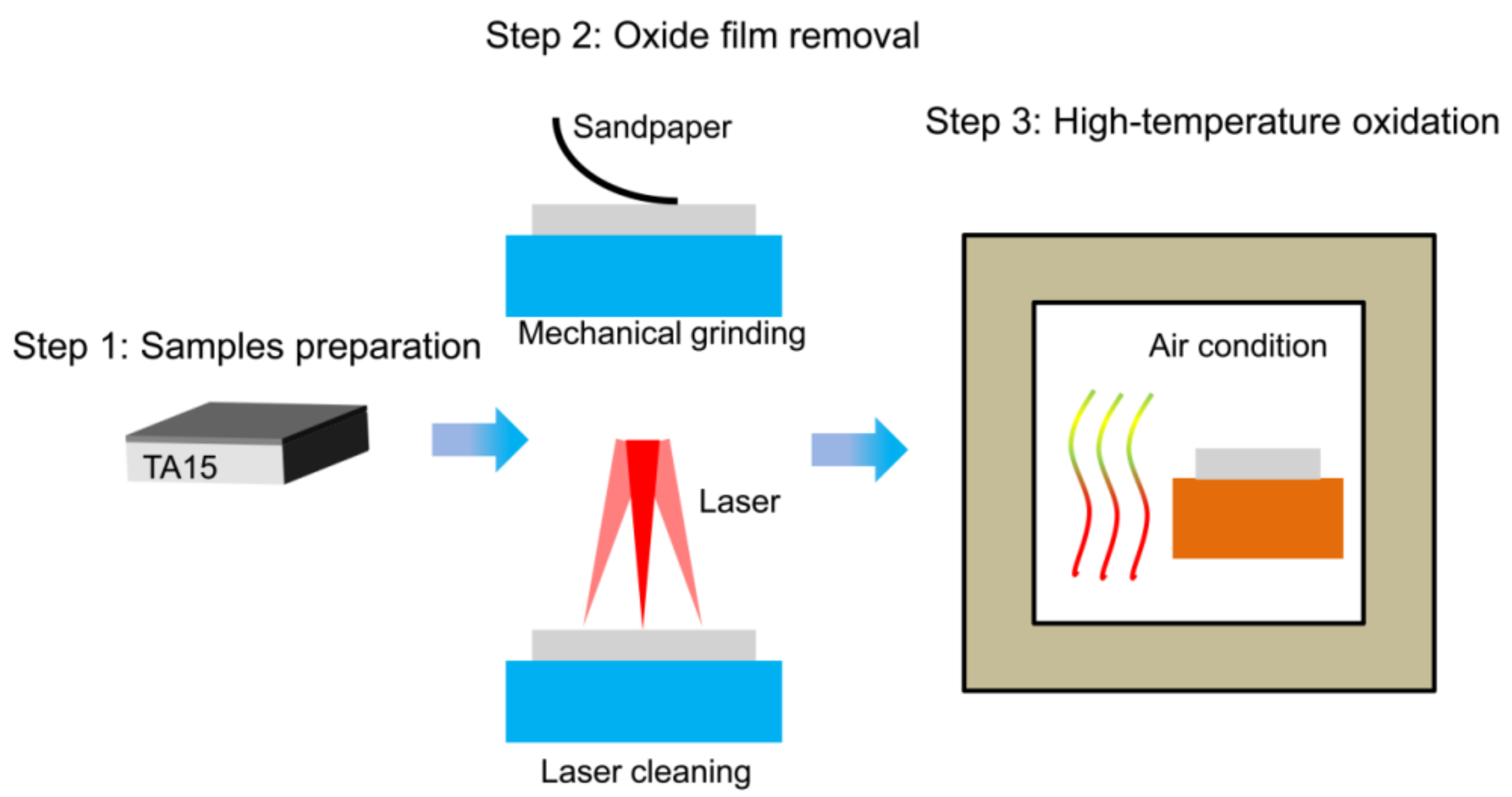

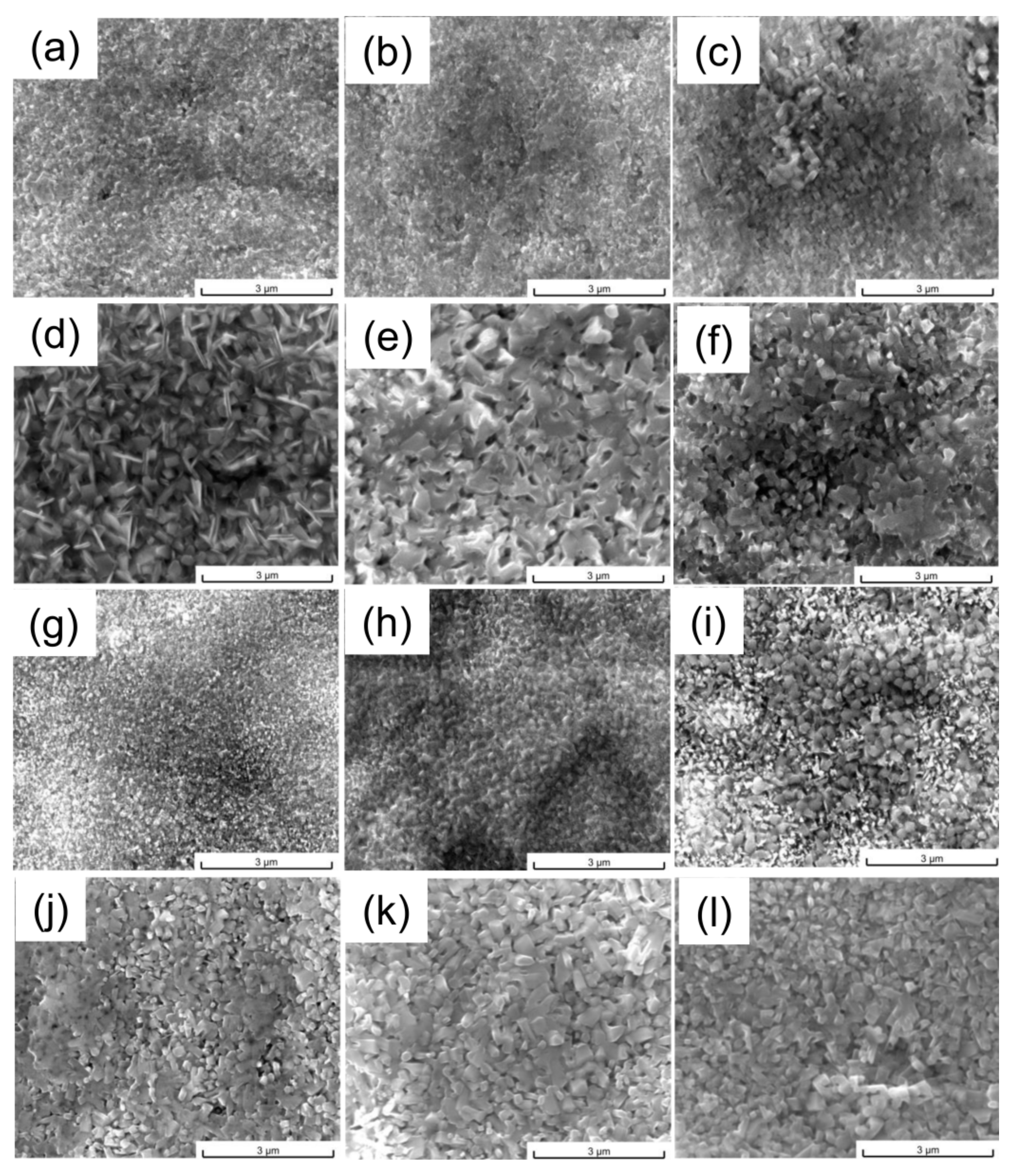
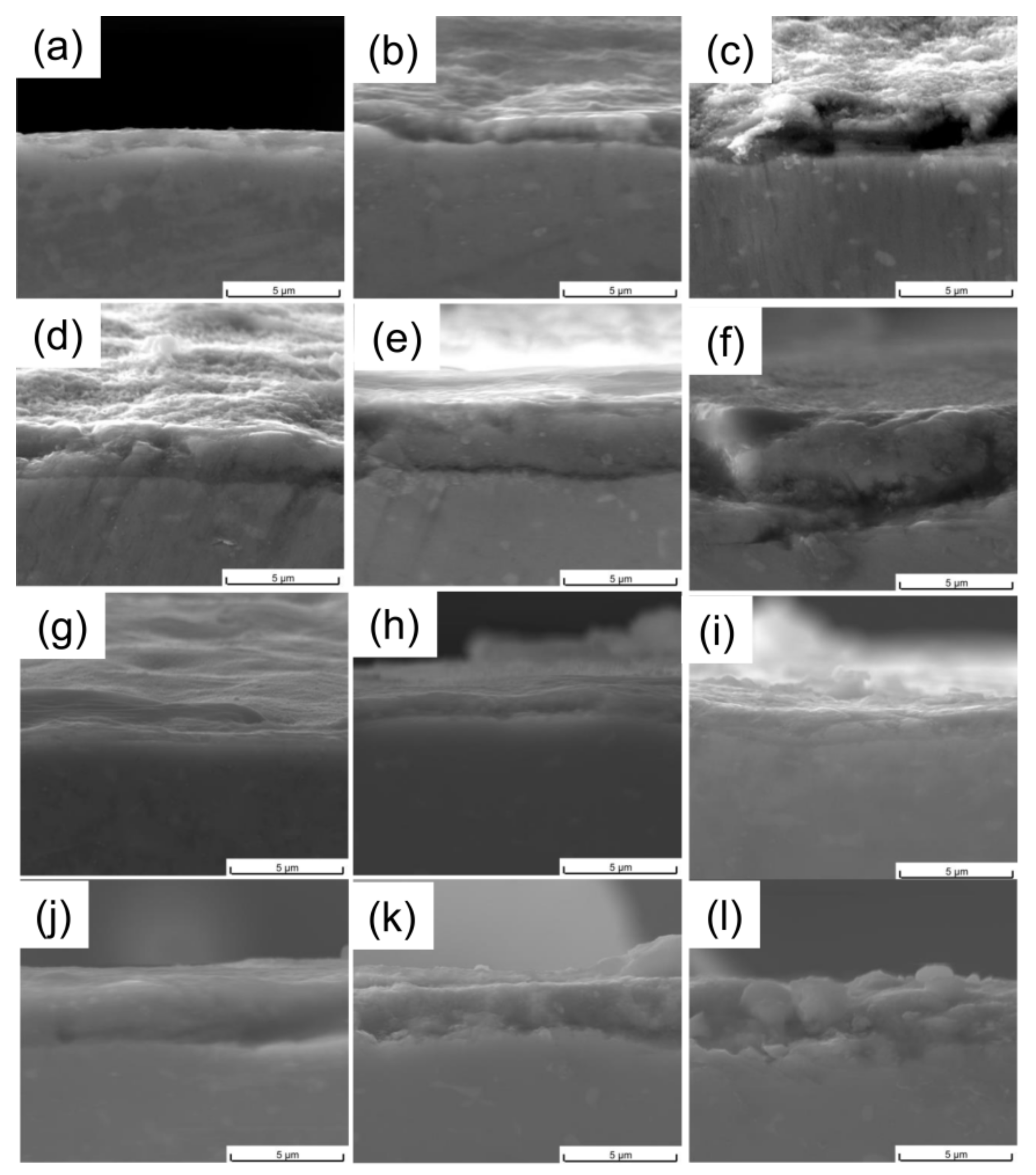


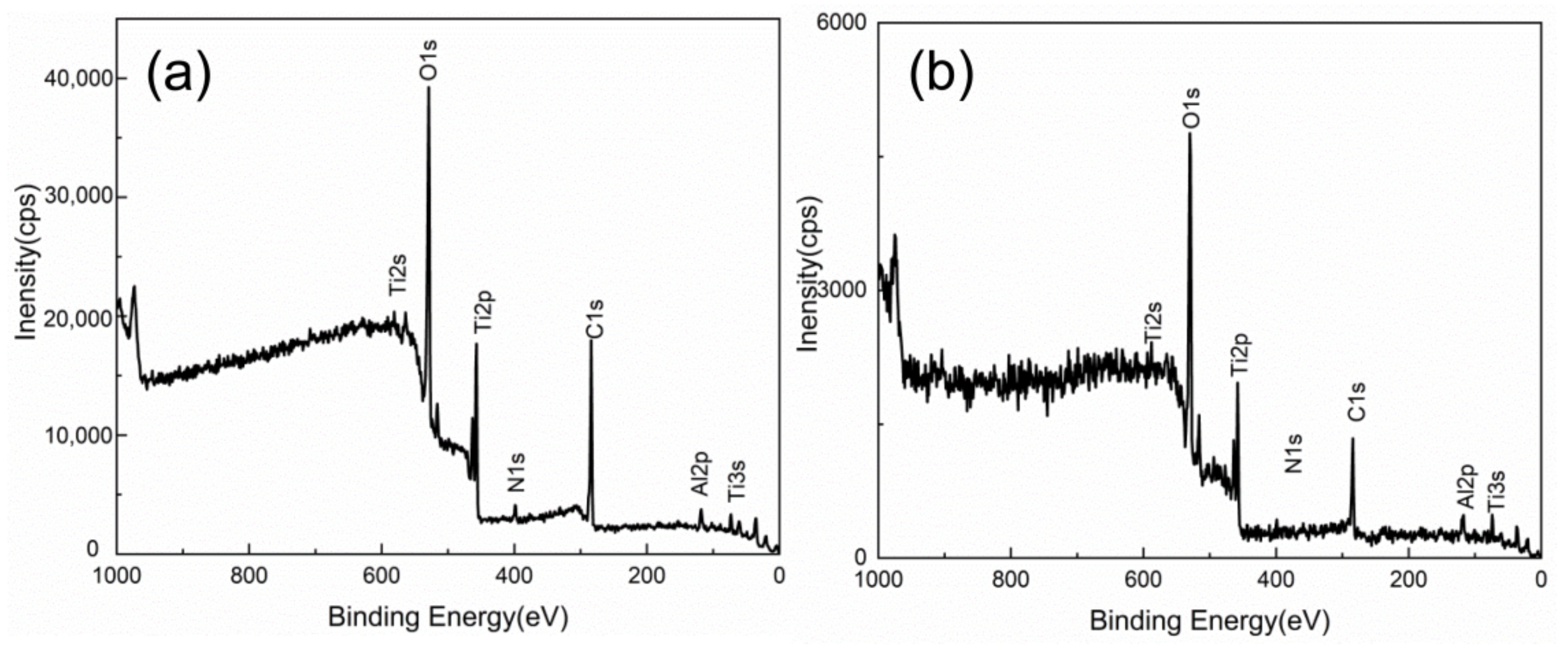
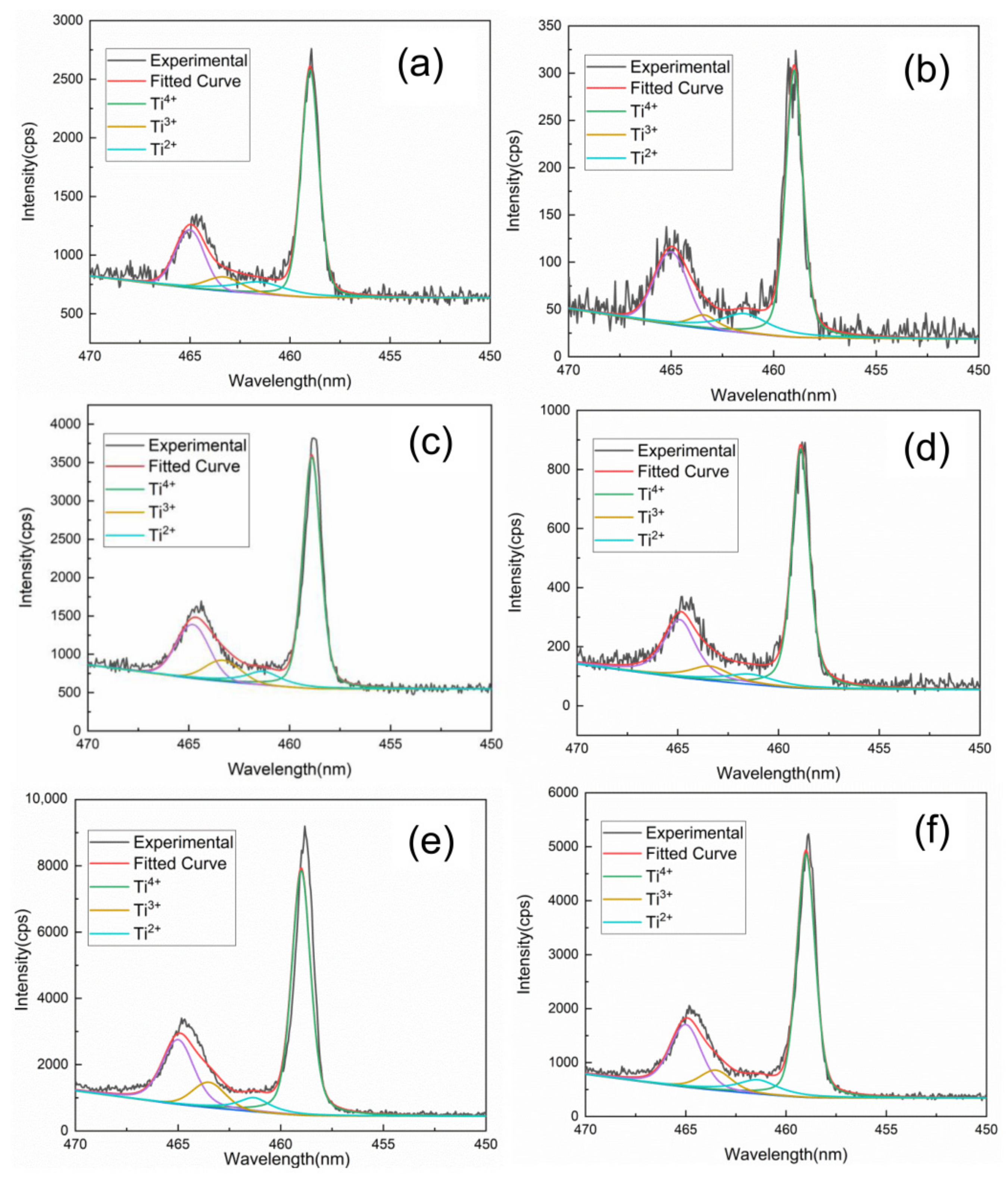
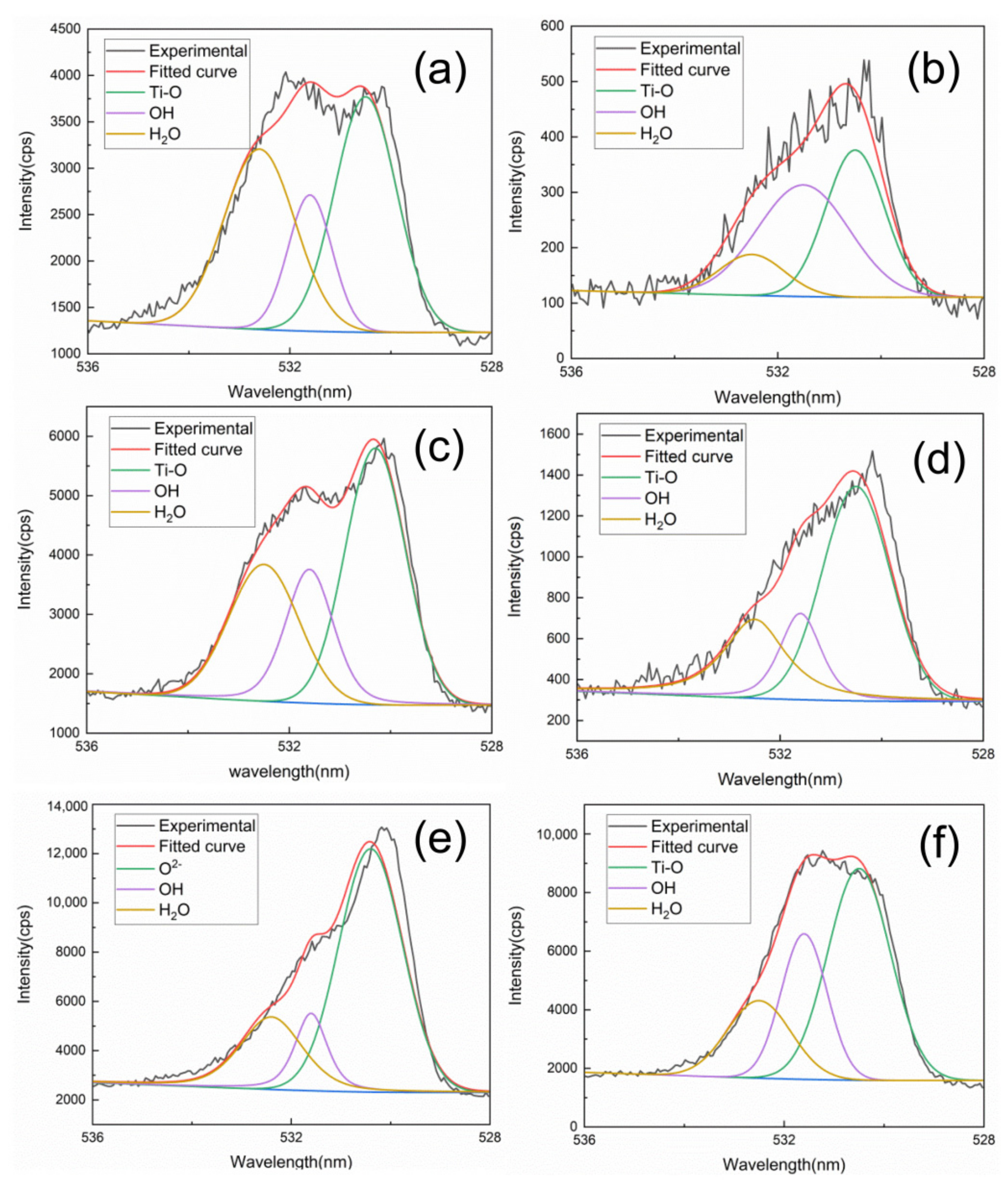
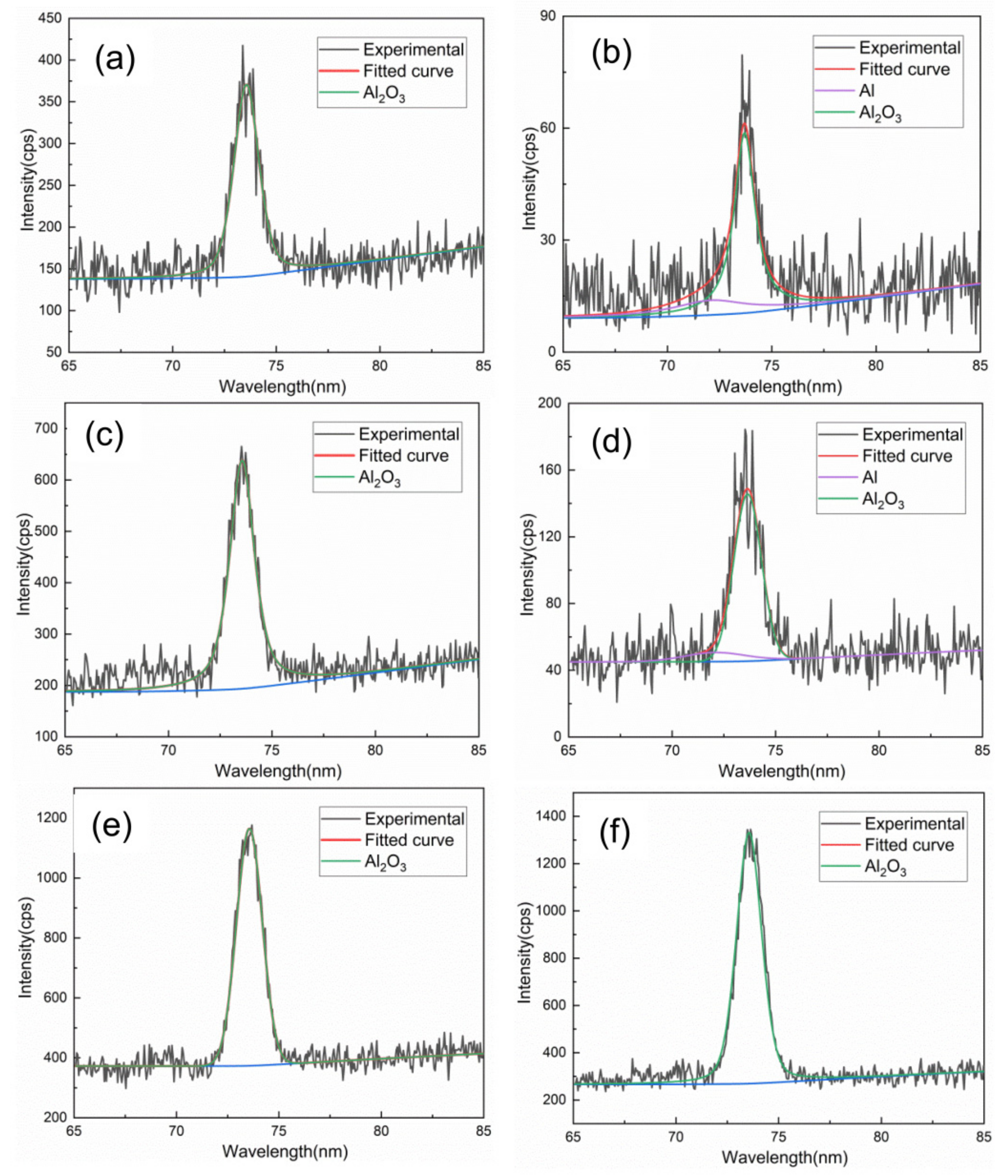
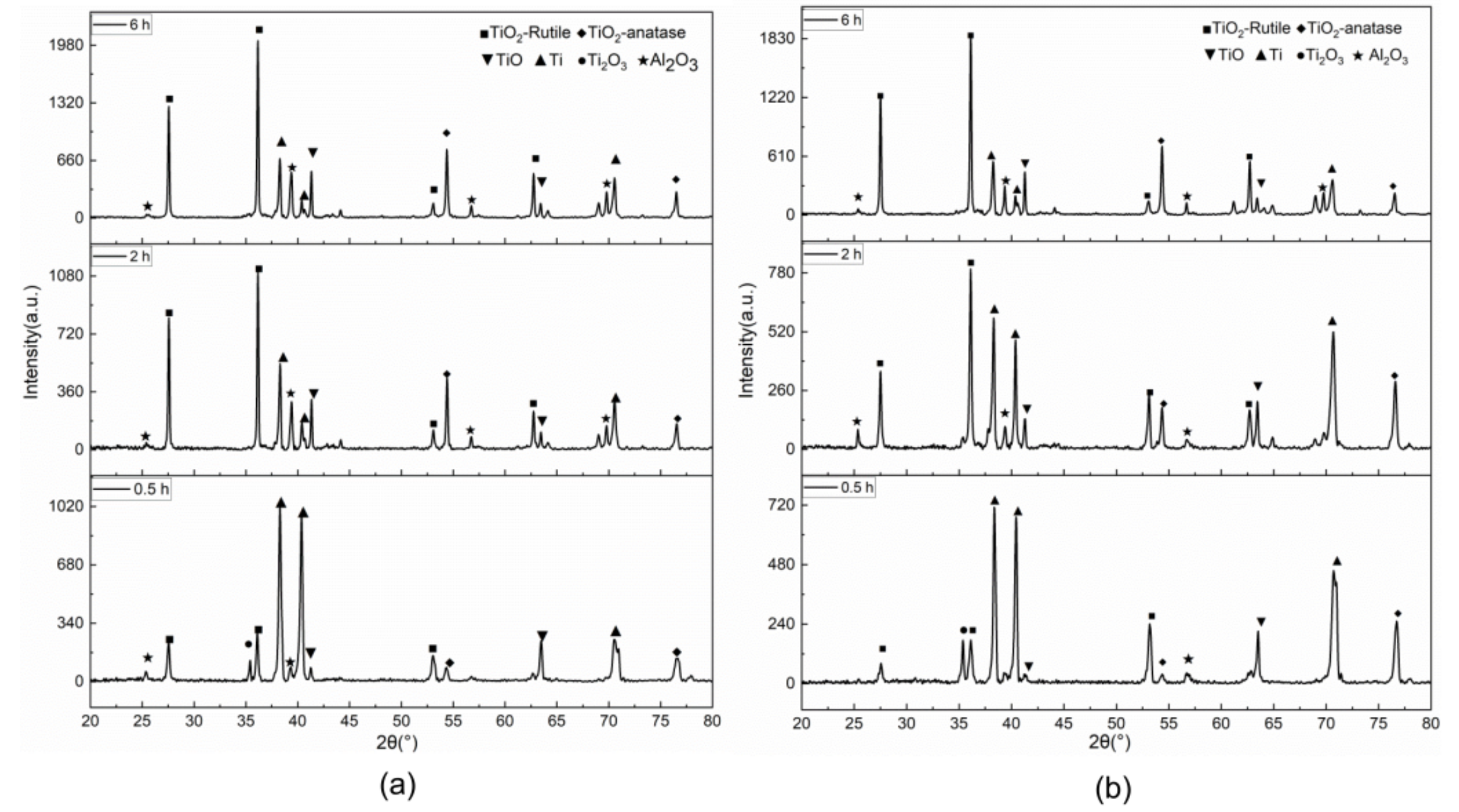
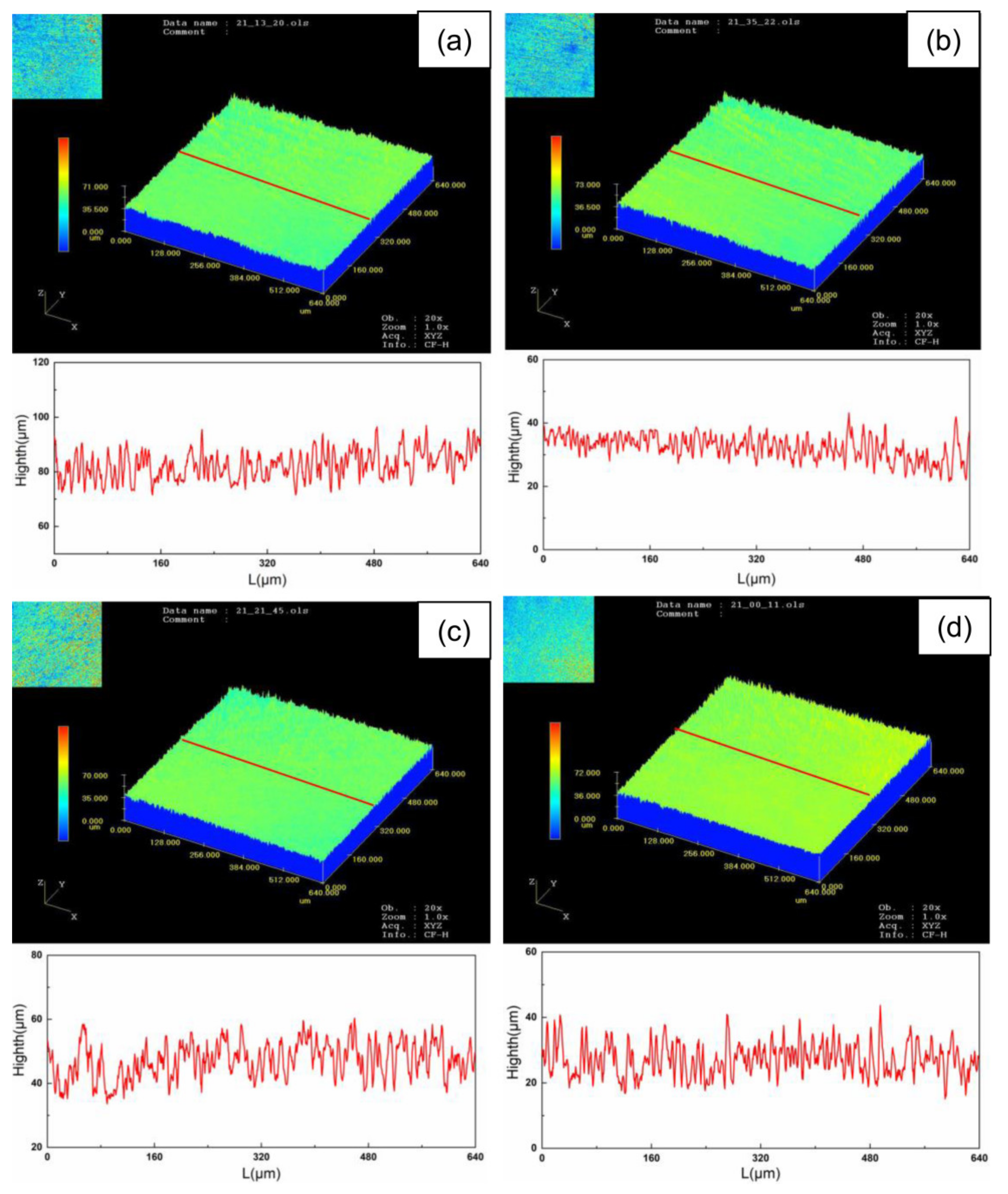


Publisher’s Note: MDPI stays neutral with regard to jurisdictional claims in published maps and institutional affiliations. |
© 2021 by the authors. Licensee MDPI, Basel, Switzerland. This article is an open access article distributed under the terms and conditions of the Creative Commons Attribution (CC BY) license (https://creativecommons.org/licenses/by/4.0/).
Share and Cite
Li, Z.-C.; Xu, J.; Zhang, D.-H.; Xu, Z.-H.; Yang, S.-R.; Shan, D.-B.; Guo, B. High-Temperature Oxidation Behaviors of TA15 Titanium Alloy after Mechanical Grinding and Laser Cleaning. Coatings 2021, 11, 1090. https://doi.org/10.3390/coatings11091090
Li Z-C, Xu J, Zhang D-H, Xu Z-H, Yang S-R, Shan D-B, Guo B. High-Temperature Oxidation Behaviors of TA15 Titanium Alloy after Mechanical Grinding and Laser Cleaning. Coatings. 2021; 11(9):1090. https://doi.org/10.3390/coatings11091090
Chicago/Turabian StyleLi, Zhi-Chao, Jie Xu, Dong-He Zhang, Zhen-Hai Xu, Shi-Rui Yang, De-Bin Shan, and Bin Guo. 2021. "High-Temperature Oxidation Behaviors of TA15 Titanium Alloy after Mechanical Grinding and Laser Cleaning" Coatings 11, no. 9: 1090. https://doi.org/10.3390/coatings11091090
APA StyleLi, Z.-C., Xu, J., Zhang, D.-H., Xu, Z.-H., Yang, S.-R., Shan, D.-B., & Guo, B. (2021). High-Temperature Oxidation Behaviors of TA15 Titanium Alloy after Mechanical Grinding and Laser Cleaning. Coatings, 11(9), 1090. https://doi.org/10.3390/coatings11091090






